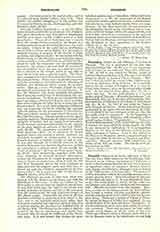

Pharsalus, titular see and suffragan of Larissa in Thessaly. The city is mentioned for the first time after the Persian war. In 445 B.C. it was unsuccessfully besieged by the Athenian Myronides (Thucyd., I, III), in 395 it was seized by Midias, tyrant of Larissa (Diodorus Siculus, XIV, 82), and it was finally forced to submit to Jason of Pherae (Xenoph., “Hellen.”, VI, 1, 2); in 191 the consul Acilius Glabrio made it over to Antiochus, King of Syria. It is especially famous for the victory of August 9, 48 B.C., won by Caesar from Pompey, after the latter had killed 15,000 men. At the time of Pliny (Hist. Nat., IV, 15) it was a free city. In the sixth century A.D. it was made a port of Thessaly (“Hieroclis Synecdernus”, ed. Burckhardt, 642, 13); in the time of Constantine Porphyrogenetus, it belonged to the theme of Macedonia (op. cit., 50, 6). In 1881 it was ceded by Turkey with Thessaly to Greece. Of the three Greek bishops mentioned by Le Quien (Oriens christianus, II, 116), it is doubtful if the first belonged to this see, but this list could easily be completed. At the beginning of the tenth century Pharsalus still remained suffragan of Larissa (Gelzer, “Ungedruckte. Texte der Notitiae Episcopatuum“, 557); about 970 (op. cit., 572) it became an autocephalous archbishopric; in 1300 it was elevated by Andronicus II to metropolitan dignity; at the close of the fifteenth century it was again suffragan of Larissa. Later it was united to the Diocese of Phanarion, and was suppressed only to be replaced (1900) by the Sees of Phanarus and Thessaliotides. Pharsala numbers 2500 inhabitants, of whom nearly half are Turks. The Greeks were defeated there in 1897.
S. VAILHE

